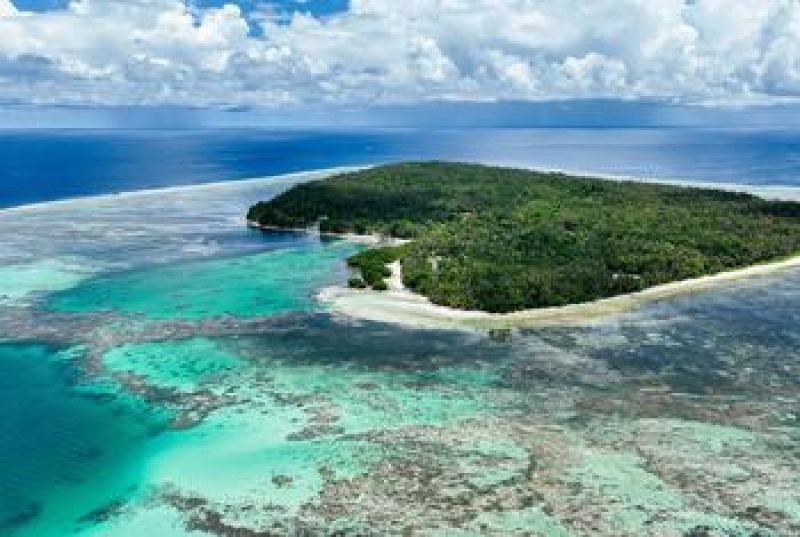- Sikaiana Islanders Face Rising Seas and Uncertain Future |
- BD Election Commission to begin political dialogue this week |
- Climate summit hears countries suffering from global warming |
- How to Visit Saint Martin’s Island in This Tourist Season 2025-26 |
- Khulna-Mongla dream rail line struggles for freight flow |
Sikaiana Islanders Face Rising Seas and Uncertain Future

Sikaiana atoll in the Solomon Islands is threatened by rising sea levels. © IOM/Junior Patrick Makau
Morning light spreads over Sikaiana, a remote atoll in the Solomon Islands where the ocean both sustains life and threatens it.
Sikaiana measures less than two square kilometres and is home to around 300 people. It lies more than 200 kilometres from the main islands of the archipelago, surrounded entirely by the Pacific Ocean.
Most homes sit just steps from the shoreline. High tides now push seawater into gardens and seep into wells, making freshwater increasingly scarce.
Yet daily life continues. Children walk barefoot to school, fishermen prepare their nets, and families tend their gardens as they always have.
At the island’s only school, Principal Tuiao Kapule draws rainwater from a storage tank — a resource that must be carefully conserved.
“When I was growing up, life in Sikaiana wasn’t like this,” he says. “The tides are higher now, saltwater has increased, and it’s harder to grow food.”
He watches students playing nearby. “Families are struggling. Sometimes children stay home when there isn’t enough to eat.”
Later in the day, Tuiao stands outside his home holding his youngest child.
“Sikaiana is my motherland,” he says. “But if we have to leave, we will. Life here is no longer the same.”
His concerns are shared by community elder Mary Maike, who has lived her whole life by the sea.
“When it rains heavily, we can’t harvest,” she says. “When the sun is too strong, our water tanks dry up. We have to search for wells and boil the water before drinking.”
She watches her grandchildren play as elders rest in the shade. Island life continues, but uncertainty lingers.
“If we must relocate, that decision will come from our leaders,” she says. “But we do not know where we would go. We depend on the sea. Moving inland would be very difficult.”
Across the Solomon Islands, rising seas, stronger storms, and shifting weather patterns are reshaping daily life — flooding gardens, contaminating wells, and eroding coastlines.
On Sikaiana, the challenge is stark. The atoll rises just four metres above sea level, protected only by a narrow strip of mangroves. Seawalls are expensive and difficult to build, leaving relocation as the only long-term option.
The fate of Sikaiana and other low-lying islands is among the issues being discussed at the UN Climate Conference (COP30) in Belém, Brazil.
In 2022, the Solomon Islands Government, with support from the International Organization for Migration (IOM), introduced the Planned Relocation Guidelines — a framework to help communities move safely and with dignity when staying is no longer possible.
As the sun sets over Sikaiana, waves break softly against the shore — a familiar rhythm that has defined life here for generations. Yet beneath this calm lies uncertainty: how long can this way of life continue?
Families like Tuiao’s and Mary’s hope their children will inherit a safe, secure home — whether it remains on Sikaiana or somewhere new.

